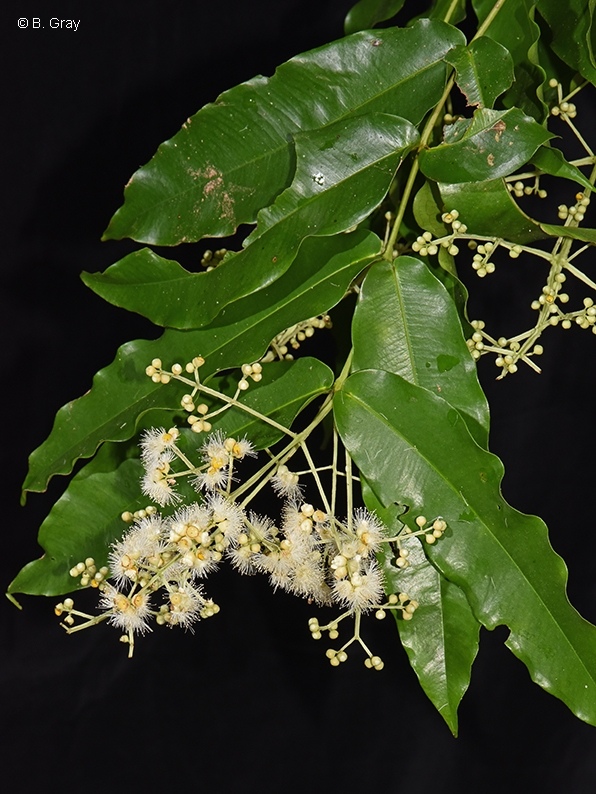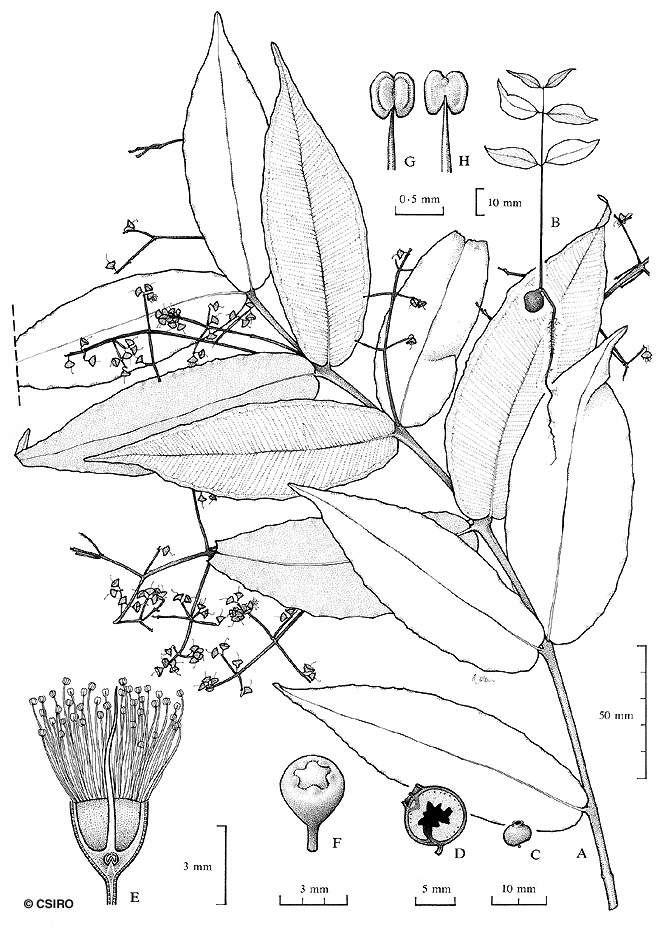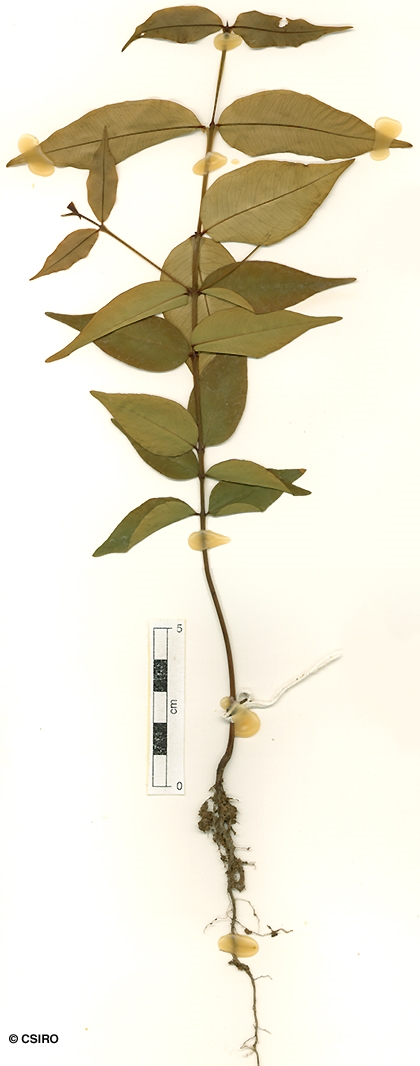Australian Tropical Rainforest Plants - Online edition
Syzygium hedraiophyllum (F.Muell.) Craven & Biffin







Craven, L.A., Biffin, E. & Ashton, P.S. (2006) Blumea 51(1): 137.
Red Satinash; Gully Satinash; Satinash, Red; Watergum; Satinash, Gully
Subrhytidome layer almost purple.
Inflorescence terminal and in the upper axils, bracts often present at anthesis. Calyx tube (hypanthium) + pedicel about 3-4 mm long, calyx tube (hypanthium) about 2.5-4 mm diam., calyx lobes small, sometimes inconspicuous, broadly triangular, about 0.2-1.4 mm long. Petals cohering and shed as an operculum, each petal +/- orbicular, about 2 mm diam., oil dots comparatively large, about 10-20 per petal. Outer staminal filaments about 2.5-4.5 mm long, anthers about 0.4 x 0.3 mm, gland small, inconspicuous, terminal, near the back of the anther. Ovules pendulous from placentas near the apex of each locule, ovules about 5-10 per locule. Style about 3-7 mm long, approximating the stamens.
Fruits globular, sometimes bilobed, about 5-7 x 8-9 mm, calyx tube (hypanthium) persisting as a distinct cup or rim at the apex of the fruit, calyx lobes small and inconspicuous, pericarp very thin, about 0.2 mm thick, forming an envelope around the cotyledons. Seed solitary, only slightly smaller than the fruit, testa absent or indistinguishable from the pericarp which is quite free from the cotyledons. Cotyledons purple, ruminate with a conspicuous, hard, dark, tanniferous inclusion in the centre. Radicle lateral, cotyledonary stipules dark, readily visible.
Cataphylls 1 pair, opposite. At the tenth leaf stage: leaf blade lanceolate or ovate, apex acuminate, base rounded, glabrous; oil dots numerous, small, visible with a lens; petiole short, stem distinctly winged. Seed germination time 19 to 22 days.
Although not generally regarded as a commercial species, trees are occasionally cut and the logs used for the production of structural timber which is marketed as Gully Satinash. Wood specific gravity 0.84. Hyland (1983).





